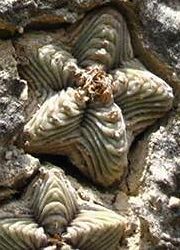
Xerophilia: Special Issue no 2 - August 2013
Velazco et al. - A new species of Aztekium (Cactaceae) from Nuevo León, México
A new species of Aztekium (Cactaceae) from Nuevo León, México
*Carlos Gerardo Velazco Macías1, Marco Antonio Alvarado Vázquez2 and Salvador Arias Montes3.
1Parks and Wildlife Nuevo León, Protected Natural Areas, Alfonso Reyes Avenue North s / n, Monterrey 64290, Nuevo León, México, *carlos.velazco@gmail.com.
2Laboratory of Botany, Faculty of Biological Sciences, University of Nuevo Leon, University Campus, San Nicolas de los Garza CP 66451, Nuevo León, México, maalvarado@fcb.uanl.mx.
3Botanical Garden, Institute of Biology, National Autonomous University of México, México D.F. 04510, México, sarias@ibunam2.ibiologia.unam.mx.
Abstract.
A third Aztekium species (Cactaceae, Cactoideae, Cacteae) is proposed, this being endemic to the state of Nuevo León and restricted to the Sierra Madre Oriental region; this new species shares morphological similarities with both A. ritteri and A. hintonii, being distinct from the first species by having only a maximum of 5 ribs, the lack of inter-ribs (false ribs) between the main ribs and the size and color of perianth segments; while it differs from A. hintonii in the smaller body size, the maximum number of ribs (up to 10 in A. hintonii) and also the size and color of perianth segments. Additional information regarding habitat, conservation and taxonomical notes are provided.
Key words: flora, endemic, biodiversity, species, descriptions.
Key words:flora, endemic, biodiversity, species, descriptions.
Introducion.
México has been listed as the primary center of diversity of the family Cactaceae (Oldfield, 1997), 669 species and 63 genera being recognized throughout the Mexican territory (Guzman et al, 2003); there is also an estimated 73% endemism at generic level and of 78% at specific level (Hernandez and Godinez, 1994). It has been suggested that within the Mexican territory the Chihuahuan Desert region is one of the major cacti distribution centers (Hernandez and Barcenas 1995, 1996), with highlights on the region Mier y Noriega (Gómez-Hinostrosa and Hernández, 2000) .
Aztekium is a small genus of morphologically homogeneous, depressed, shortly globose-cylindrical plants. This genus is characterized by a combination of morphological characters: short stems under 10 (-15) cm diameter, green gray, ribs well defined, narrow, longitudinally striated, the areoles are very close together, with spines restricted to the apical areoles, short, flattened and recurved, flowers emerge at the apex of stem, and pericarp and the receptacle are naked, the tepals and stamens are only a few, seeds are under 0.8 mm in length and bear a strophiole (Boedeker, 1929, Bravo-Hollis and Sanchez-Enhanced, 1991, Anderson, 2001; Hunt, 2006). Plants of this genus grow in the typical desert scrub of the northern México (Rzedowski, 2006) but in particular environments defined by bluffs or gypsum or limestone hills (Anderson et al., 1994).
The genus includes only two species, Aztekium hintonii Glass & Fitz-Maurice (1992a, 1992b) and A. ritteri (Boed.) Boed. (Boedeker, 1928, 1929), the differentiation between the two being well supported by a consistent number of characters (Table 1). It should be noted that the size is among the most obvious characters, with A. hintonii being larger (up to 9 cm tall, and up to 10 cm diameter), while A. ritteri reaches only half that size (up to 5 cm height and diameter). The number, depth and angle of the ribs are also different, since in A. hintonii ribs are generally 8-15, 6-12 mm deep and have acute margin, while A. ritteri has ribs 6-11, 3-6 mm deep, with the margin blunt and presents inter-ribs (false ribs) (Glass and Fitz-Maurice 1992a, 1992b; Hunt 2006). The recognition of Aztekium as a genus has been discussed by several authors. Buxbaum (1950) argued on the remarkable similarities in the morphology of the stem and seed with Strombocactus, a genus from central México, noting that possibly they represent a single genus, Strombocactus. A morphological comparison by Skillman and Anderson (1984) showed that although both taxa share the same growth, seed size and the presence of the strophioles, the differences include absence of wax in the epidermis of the stem, the ribs arrangenment of the stem, as well as flower and fruit shorter in Aztekium. More recently, phylogenetic analyzes have confirmed that both genera are part of the tribe Cacteae (Butterworth et al., 2002, Hernández-Hernández et al., 2011; Barcenas et al., 2011), but they offer a hypothesis in regards of the relationship of these genera within the tribe, which concludes that they belong to distant clades. According to this evidence, Aztekium and Geohintonia are closely related and both are in turn related with Astrophytum and Echinocactus, which stand as one of the clades that diversified earlier in the tribe. Moreover Strombocactus is being resolved as part of another clade composed of Ariocarpus and Turbinicarpus (in part).
During an exploration conducted by Biol. Mario Alberto Valdéz Marroquín in the area of the Sierra Madre Oriental, a member of the Cactaceae family was discovered, and recognized as belonging to the genus Aztekium, given the results of the morphological evidence analysed, and consequently described as a new species.
Materials and methods.
To document the morphological differences between the probable new species and other Aztekium taxa, relevant literature was reviewed and live specimens in habitat and cactus collection of the Botanical Garden (Institute of Biology, UNAM) were examined, supplemented with the review of specimens in herbaria UNL and MEXU. The measurements were made using vernier scales or stereoscopic microscope. The seeds were measured under a stereoscopic microscope connected to a computer, for recording they were washed in distilled water and biological detergent (TWEEN), then covered with gold plating (300-400 Å thick) and observed on a Hitachi scanning electronic microscope model 2460N. The description was based on the terminology of Barthlott and Hunt (2000).
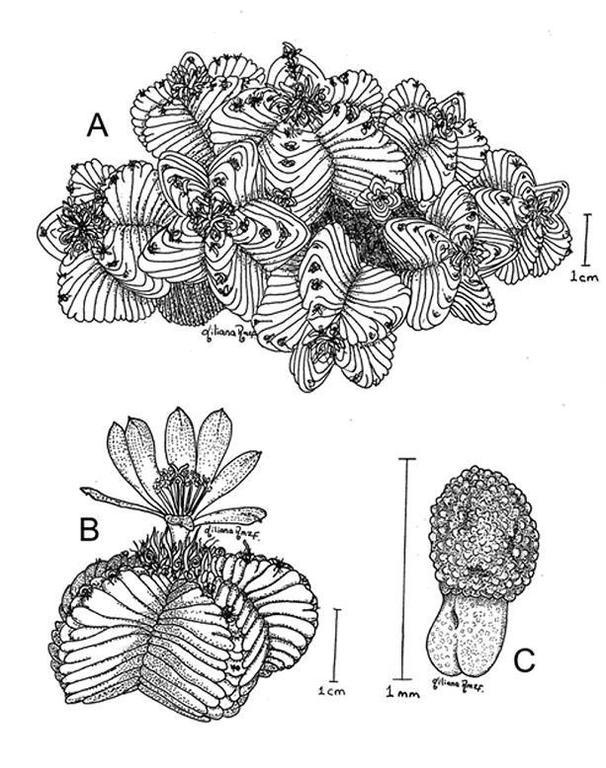
Fig. 1. Diagnostic morphological characters of Aztekium valdezii (MA Valdéz et al. Collection No. 001, type specimen, UNL). A. Stem form, branched. B. Individuals in the reproductive stage. C. Seed.
Description.
Aztekium valdezii Velazco, Alvarado et Arias sp. nov. (Fig. 1).
TYPE: MÉXICO. Nuevo León: municipality and locality undisclosed for conservation reasons. Altitude 600-700 m, April 2009, M. A. Valdéz Marroquin, M. A. Alvarado Vázquez & C. G. Velazco Macías, collection number 001. (holotype: UNL; isotypes MEXU, ANSM).
Succulent plants, with simple stems or branched from the base. Roots simple, fibrous, thickening at the boundary with the stem. Stem globose, up to 6 cm in height, up to 6 cm in diameter, greenish-gray; ribs to 5, margin rounded in cross section, formed by the compressed tubers from the apex to the base, without secondary inter-ribs (false ribs); areoles contiguous, 1 mm diameter, monomorphic, covered with yellowish-white trichomes only in young areoles; spines 3 (-4) for each areole, 0.6-1.1 cm long, flattened and of papyraceous consistency, curved and twisted toward the apex of the plant, present only in the upper half of the stem. Infundibuliform flowers, 1-1.9 cm in length, 1.5-2.5 cm in diameter at anthesis, restricted to areoles near the apical meristem; pericarp naked; outer segments, up to 7 mm in length, up to 2 mm in diameter, elliptical, with acute apex, white in the proximal parts and light or intense magenta in the distal parts; inner segments up to 11 mm in length, up to 4 mm in diameter, oblanceolate, with rounded apex, deep pink or magenta, and white only the proximal third; stamens up to 4 mm long, white, anthers are yellow; style up to 10 mm long, stigma lobes 4-5. Fruit rounded, naked, after breaking up with a dehiscent pericarp, irregular with age. Seeds (0.37-) 0.57 (-0.69) mm long (0.42-) 0.52 (-0.69) mm thick, ovoid, opaque, dark brown, edge expanded and constricted around the thread-micropillar region, cells of the lateral sides isodiametric with straight anticlinal walls, ribbed; convex patterns, convexities on the high dome, finely striated micro embossing pattern; thread-micropillar region small; strophiole present and developed.
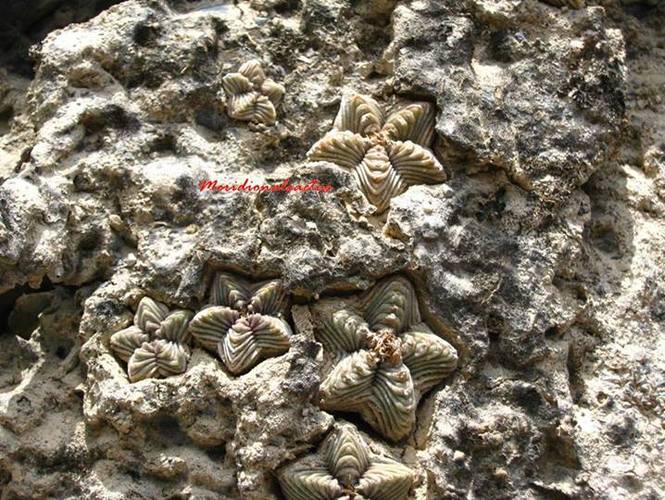
Fig. 2. Aztekium valdezii specimens in their habitat.
Distribution, Habitat and Phenology - The population is isolated in the vicinity of the Sierra Madre Oriental, and is located in an area of about 2 square miles, growing in ravines similar to the habitat of Aztekium ritteri, it is the same complex of gullies and canyons which helps to keep these populations isolated from specimens of A. ritteri. The vegetation is submontane scrub and desert scrub, consisting of a mixture of species present in the surrounding habitat, among which are: Cordia boissieri, Acacia rigidula, Celtis pallida, Helietta parvifolia, Gochnatia hypoleuca, Guaiacum angustifolium, Caesalpinia mexicana, Agave lechuguilla, Agave striata, Hechtia glomerata, Echinocereus penthalophus, Ferocactus hamatacanthus, Mammillaria heyderi; occuring in close proximity with the new Aztekium species is only Selaginella lepidophylla. Its flowering takes place like in the other two taxa, in late spring and early summer.
Conservation - During the visits that were conducted to assess the populations of this new taxon, there were no short-term threats observed, such as urban development, excessive logging or changes in land use. However, in the medium and long term illegal collection could jeopardize the perpetuity of these populations in the wild, given that they are restricted to a few canyons in the Sierra Madre Oriental. Currently, controlled breeding efforts to mitigate the effects that could occur by illegal collection of plants are being carried out.
Etymology - The species name is given in honor of its discoverer Biol. Mario Alberto Valdéz Marroquín.
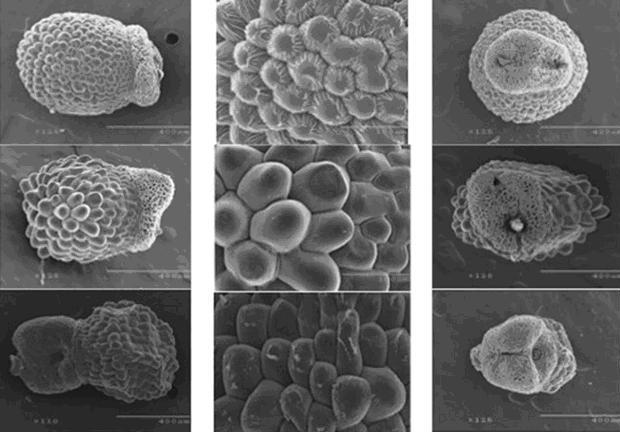
Fig. 3. Aztekium seeds. A. Aztekium hintonii, left: lateral view of whole seed, center: testa, lateral view, right: micropillar region with strophiole thread. B. Aztekiun ritteri, left: lateral view of whole seed, center: testa, lateral view, right: micropillar region with strophiole thread. C. Aztekium valdezii, left: lateral view of whole seed, center: testa, lateral view, right: micropillar region with strophiole thread (From MA Valdéz et al. Collection No. 001, type specimen, UNL).
Taxonomic Remarks.
The new species described here comprises several morphological characters that allow placing it as a novelty within Aztekium (Table 1). The shape of the stem and branching of the new species (Figs. 1 and 2) are common with those of A. ritteri and make a noticeable difference with A. hintonii. The stem size (height and diameter) is also similar to A. ritteri by allowing assumed continuous variation between populations, while when compared with A. hintonii the resulting discontinuity is apparent. The number and consistence of the spines are considered among plasticity characters in cacti, which result from exposure to environmental conditions (Gibson and Nobel, 1986), but in this paper we can argue about its value as diagnostic character for the genus, as from recording in the specimens of the new taxon and A. hintonii and A. ritteri the spine number oscillates around 3 and they have a papery consistency. The flower diameter and length of the outer tepals also reflect variation in the taxon described and in the two other species. In regards to the seed (Fig. 3), some characters corroborate their significance in the diagnostic of the genus, such as very small for the Cactaceae family (<0.8 mm, according to Barthlott and Hunt, 2000), the convex patterns and presence and size of the strophiole. Moreover, the absence of secondary ribs in the new taxon marks a difference to A. ritteri but is consistent with A. hintonii. According to Bravo-Hollis and Sánchez-Mejorada (1991), the secondary ribs in Aztekium are the result of lateral compression of the base of the tubercles exerted by the ribs, and are interposed between the latter. All the works reviewed as our own observations indicate that the secondary ribs are a unique character of A. ritteri (Anderson and Skillman, 1984; Anderson et al., 1994; Bravo-Hollis and Sánchez-Mejorada, 1991; Hunt, 2006). The low number of ribs (up to 5) and the highly developed strophiole of the seed, represent the most consistent differences of the new taxon with the other members of Aztekium. Studies in other taxa of Cacteae, such as Echinocactus and Ferocactus (Robberecht and Nobel, 1983, Gibson and Nobel, 1986), as well as in Lophophora (Anderson, 1996) have shown that the number of ribs is increased during the development of individuals until they reach maturity. With this consideration, the lowest number of ribs of the new taxon relative to the other Aztekium taxa, our hypothesis is that this is a constant and fixed attribute in the population, since all our observations in the field and in culture, indicate that mature (reproductive) specimens present only up to 5 ribs.
The description of this new species is a measure of the increased detailed knowledge of the flora of México, where the botanical exploration and analysis of new records of flora, revealed new species that apparently can be very similar to others already described; such is the case for example of Strombocactus corregidorae, Mammillaria cielensis and Lophophora alberto-vojtechii (Bohata, Myšák and Šnicer, 2008, Arias-Montes and Sanchez-Martinez, 2010; Martinez-Avalos et al, 2011).
Acknowledgements.
To dr. Liliana Ramírez Freire for the botanical illustrations. To Parks and Wildlife of Nuevo León for their logistical support. To Berenit Cristian Mendoza Cervantes (Institute of Biology, UNAM) for support in the MEB and seed data.
Bibliographical References.
Anderson, E.F. 1996. Peyote the divine cactus. 2a. ed. The University of Arizona Press, Tucson, EUA, 776 p.
Anderson, E.F. 2001. The cactus family. Timber Press. E.U.A. 776 p.
Anderson, E.F. & S. M. Skillman. 1984. A comparison of Aztekium and Strombocactus (Cactaceae). Systematic Botany 9: 42-49.
Anderson, E.F., S. -Montes-Montes y N.P.Taylor. 1994. Threatened cacti of Mexico. Royal Botanic Gardens, Kew. Reino Unido. 136 p.
Arias, S y E. Sánchez-Martínez. 2010. Una especie nueva de Strombocactus (Cactaceae) del río Moctezuma, Querétaro, México. Revista Mexicana de Biodiversidad 81: 619- 624.
Bárcenas, R.T., C. Yesson y J.A. Hawkins 2011. Molecular systematics of the Cactaceae. Cladistics 27: 1-20.
Barthlott, W. y D. Hunt. 2000. Seed morphology in the Cactaceae subfam. Cactoideae. Succulent Plant Research 5: 1-173.
Boedeker, F. 1928. Echinocactus ritterii Böd. sp n. Zeitschrift für Sukkulentenkunde 3(14): 305-306.
Boedeker, F. 1929. Echinocactus ritterii Böd. Monatsschrift der Deutschen Kakteen-Gesellschaft 1: 52.
Bohata J., V. Myšák y J. Šnicer. 2008. Lophophora alberto-vojtechii, J. Bohata, V. Mysak & J. Snicer: una nuova preziosa miniatura nel genere Lophophora ~ an exquisite new miniature from the genus Lophophora. Cactus & Co. 12(2): 106-117.
Bravo-Hollis, H. y H. Sánchez-Mejorada. 1991. Las Cactáceas de México. Vol. 2. Universidad Nacional Autónoma de México. México. 404 p.
Butterworth, C.A., J.H. Cota Sánchez y R.S. Wallace. 2002. Molecular Systematics of Tribe Cacteae (Cactaceae: Cactoideae): a phylogeny based on rpl16 intron sequence variation. Systematic Botany 27(2): 257–270.
Buxbaum, F. 1950. Morphology of cacti. Abbey Garden Press.
Del Conde Juárez, H.S.A., R. Contreras-Medina e I. Luna-Vega. 2009. Biogeographic analysis of endemic cacti of the Sierra Madre Oriental, Mexico. Biological Journal of the Linnean Society. 97; 373–389.
Gibson, A.C. y P.S. Nobel. 1986. The cactus primer. Harvard University Press.
Glass, C. y W.A. Fitz-Maurice. 1992a. Nuevos taxa de cactáceas en Nuevo León, México. Cactáceas y Suculentas Mexicanas 37: 11-27.
Glass, C. y W.A. Fitz Maurice. 1992b. Geohintonia mexicana and Aztekium hintonii: two new cacti from Mexico. Cactus and Succulent Journal (Los Angeles). 64: 141-147.
Gómez-Hinostrosa, C. y H.M. Hernández. 2000. Diversity, geographical distribution, and conservation of Cactaceae in the Mier y Noriega region, Mexico. Biodiversity and Conservation. 9:403-418.
González Botello, M.A. 2004. Cactáceas del Estado de Nuevo León: riqueza, patrones de distribución y conservación. Tesis de licenciatura. Facultad de Ciencias Forestales, U.A.N.L. Linares, Nuevo León. 388 p.
Guzmán U., S. Arias y P. Dávila. 2003. Catálogo de cactáceas mexicanas. Universidad Nacional Autónoma de México. México. 315 p.
Hernández, H.M. y R.T. Bárcenas. 1995. Endangered cacti in the Chihuahuan Desert: I. Distribution patterns. Conservation Biol. 9(5): 1176–1188.
Hernández, H.M. y R.T. Bárcenas. 1996. Endangered cacti in the Chihuahuan Desert: II. Biogeography and conservation. Conservation Biol. 10(4): 1200–1209.
Hernández, H.M. y H. Godínez. 1994. Contribución al conocimiento de las cactáceas mexicanas amenazadas. Acta Bot. Mex. 26: 33–52.
Hernández-Hernández T., H.M. Hernández, J.A. De-Nova, R. Puente, L.E. Eguiarte y S. Magallón. 2011. Phylogenetic relationships and evolution of growth form in Cactaceae (Caryophyllales, Eudicotyledoneae). American Journal of Botany 98: 44–61. 2011.
Hunt, D. 2006. The New Cactus Lexicon . Milborne Port: DH Books. Reino Unido.
Martínez-Ávalos, J.G., J. Gulobov, S. Arias, y J.A. Villarreal-Quintanilla. Una nueva especie de Mammillaria (Cactaceae) para Tamaulipas, México. Acta Botánica Mexicana 97: 83-91.
Oldfield, S. (comp.) 1997. Cactus and Succulent Plants- Status Survey and Conservation Action Plan. IUCN/SSC Cactus and Succulent Specialist Group. IUCN, Gland, Switzerland and Cambridge, UK. 10 + 212 p.
Robberecht, R. y P.S. Nobel. 1983. A Fibonacci sequence in rib number for a barrel cactus. Annals of Botany 51: 153-155.
Rzedowski, J. 2006. Vegetación de México.
Velazco Macías, C.G. y M. Nevarez de los Reyes. 2002. Nuevo género de la familia Cactaceae en el estado de Nuevo León, México: Digitostigma caput-medusae Velazco et Nevarez sp. nov. Cactáceas y suculentas mexicanas. 46(4): 76-86.
И в дополнение к статье еще несколько фотографий, позаимствованных в Интернете:
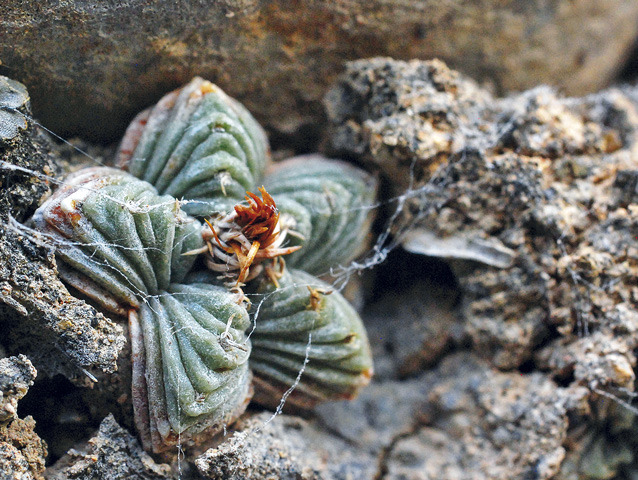
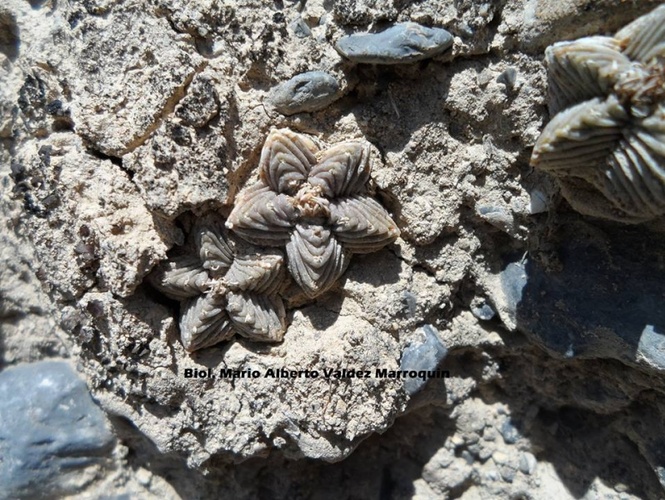
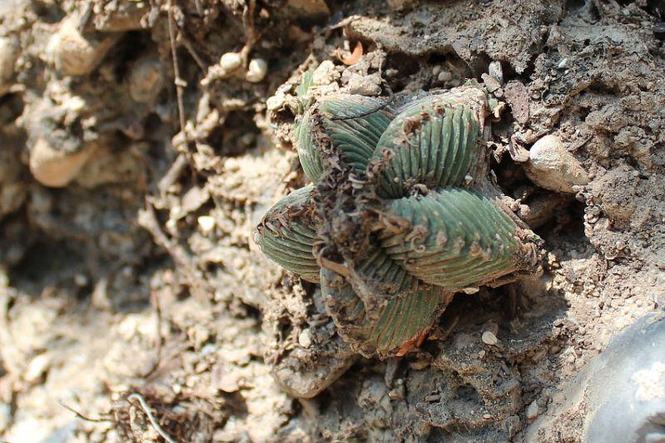
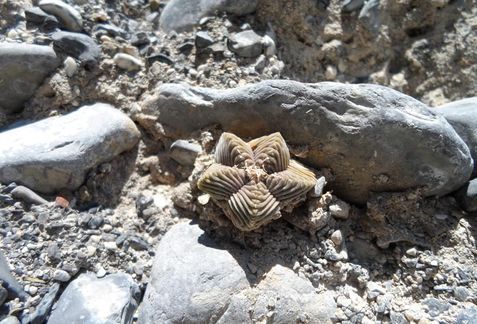
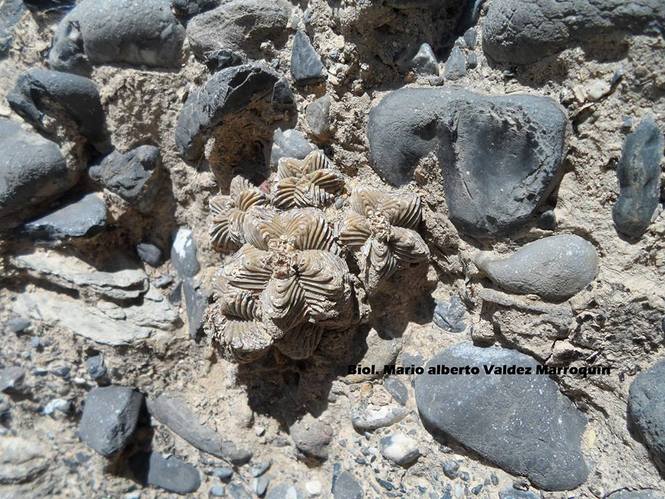


Нет комментариев
Добавить комментарий